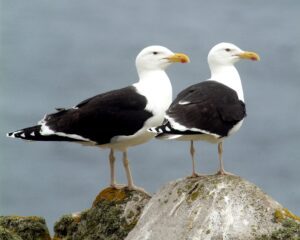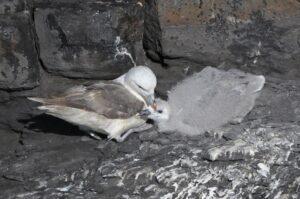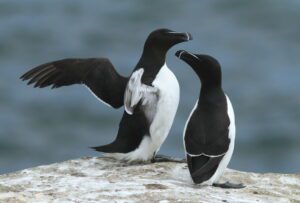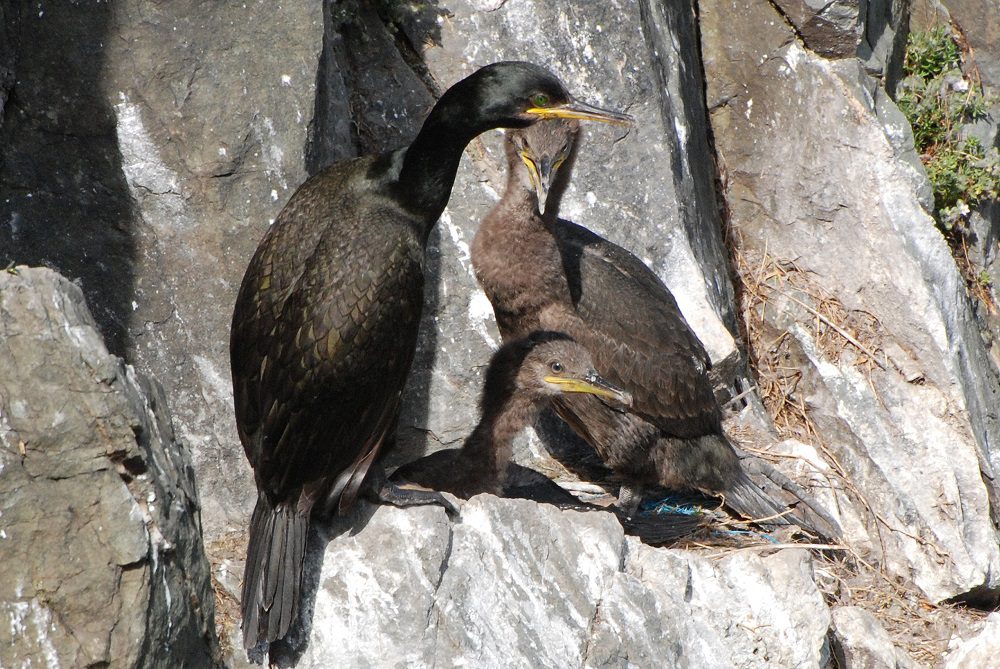Stormy weather is not unusual at this time of year. Anyone living in Ireland is well-accustomed to being buffeted by the wind and plundered by rain during the winter months. What we are less accustomed to, however, are the scenes of devastation that we are seeing unfold across different parts of the country.
We saw Cork city centre flooded for three days in a row last week, and coastal areas of Ireland are braced for more heavy rain and strong winds as Storm Ciaran makes headway. Climate change is causing Irish seas to warm, sea-levels to rise and extreme weather is becoming more frequent and severe. Each rise in global temperature is equally increasing the likelihood of wet, windy, wild weather and storminess.
Plundering rain and gale force winds have an obvious impact on infrastructure, housing, local businesses, peoples’ safety, livelihoods, and security. However, storms can also have significant impacts on seabirds, affecting their foraging, breeding success, and overall survival.

Storms don’t always kill seabirds, but they can disrupt their feeding patterns. Starvation is one of the major reasons why some seabirds eventually die in the eye of a storm. High waves, strong winds, and turbulent seas make it challenging for seabirds to see, locate and capture prey when they’re on water. Storms may also affect the availability of fish, resulting in reduced food supply, and ultimately impacting their chance of survival. Starvation becomes a factor particularly affecting younger birds less proficient at feeding, and they later wash up dead on beaches. Younger, less experienced seabirds are also more likely to experience high levels of exhaustion. Stormy weather forces seabirds to expend more energy in flight, as they struggle against strong winds and turbulence.

Secondly, seabirds often nest on cliffs, islands, and some even on mainland beaches. Storms can damage or destroy nests, eggs, and chicks, leading to a significant reduction in breeding success. Razorbills prefer to nest in exposed areas, making them particularly vulnerable to storm surges and flooding. Extreme storms during the razorbill breeding season have led to widespread nest destruction and nesting failure. Debris left by storms and flooding can also make large areas of shoreline less suitable for breeding.

Seabirds are also more at risk of physical injury during storms, including collisions with structures or debris carried by high winds. In extreme cases, severe storms can lead to direct mortality, with birds being swept away by strong winds or waves, particularly when young birds are fledging.
The high winds and storms in 2014 provide a striking example of the long-term population effects of storms on seabird populations. You may recall the 2–4-week period in early 2014 during which Ireland experienced severe windstorms, each one lasting a couple of days. These almighty storms killed thousands of seabirds all over western Europe, including along the Irish sea and off the Bay of Biscay. The storms resulted in high seabird mortality, and reduced breeding populations of species such as Common Guillemot, Razorbill, Puffin and Black Guillemot. At well monitored Rockabill, County Dublin, the Black Guillemot population was reduced by half, from 90+ pairs to about 45.
In conclusion, in the face of increasingly frequent and severe storms linked to climate change, seabird populations are facing additional pressures and threats. Investing in nature-based solutions, improving flood resilience, and crucially, starting to properly mitigate and curb our emissions, will help address some of the negative impacts of climate change on seabirds. An increased effort to tackle both the twin climate and nature crises will be imperative to ensure the long-term wellbeing of seabird populations.
Sources:
‘North Atlantic winter cyclones starve seabirds’ (Current Biology, 2021)


